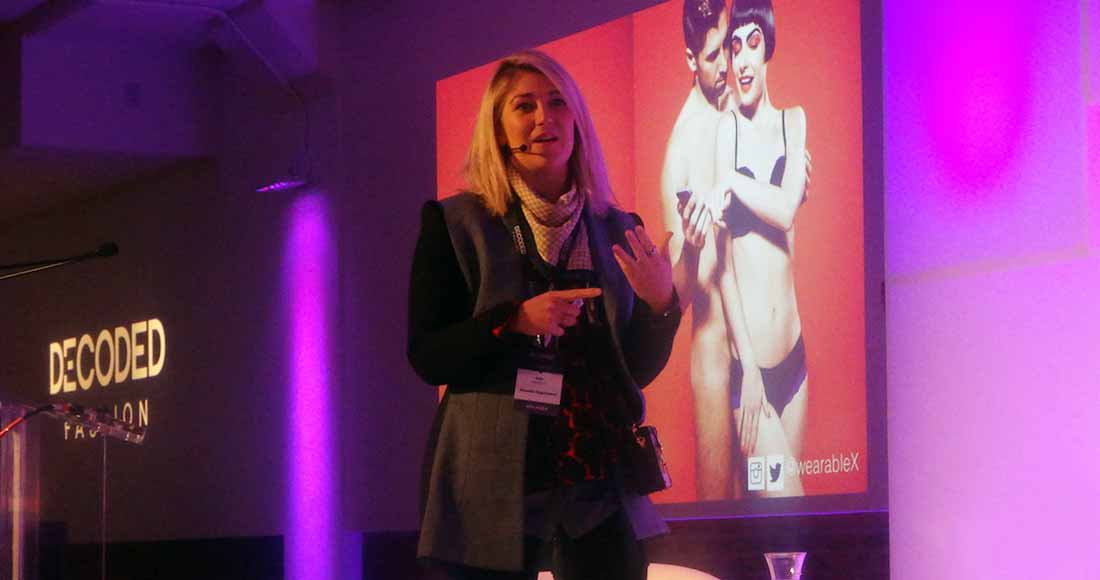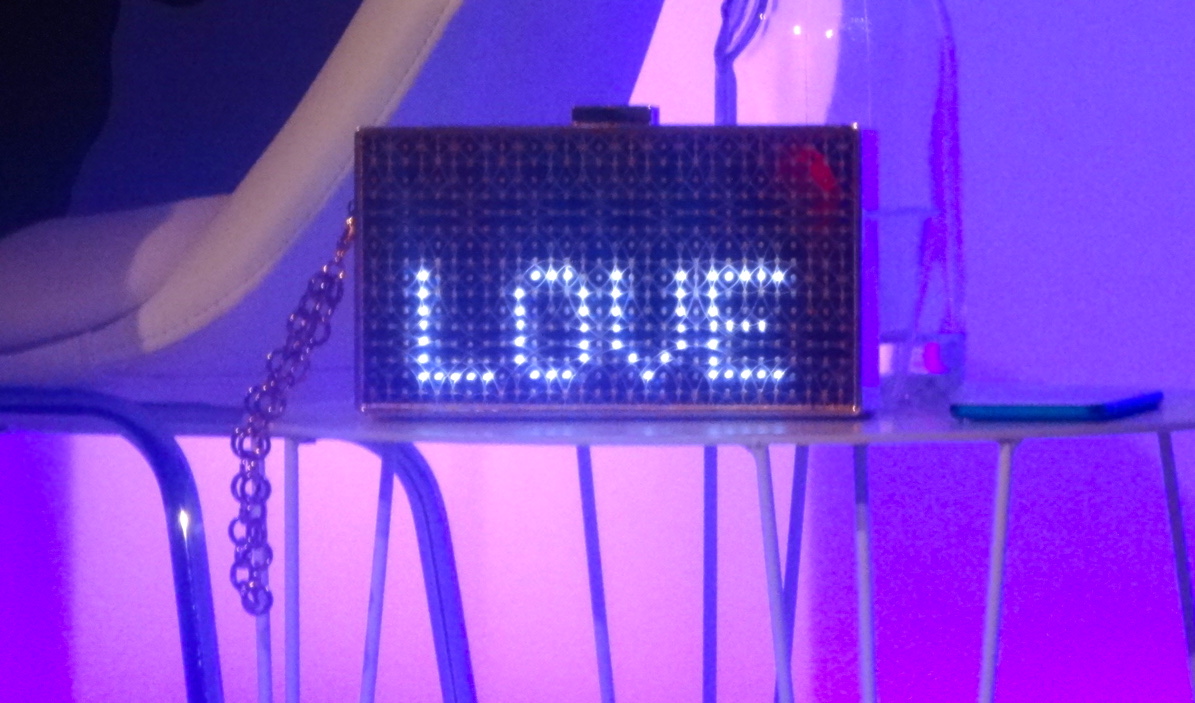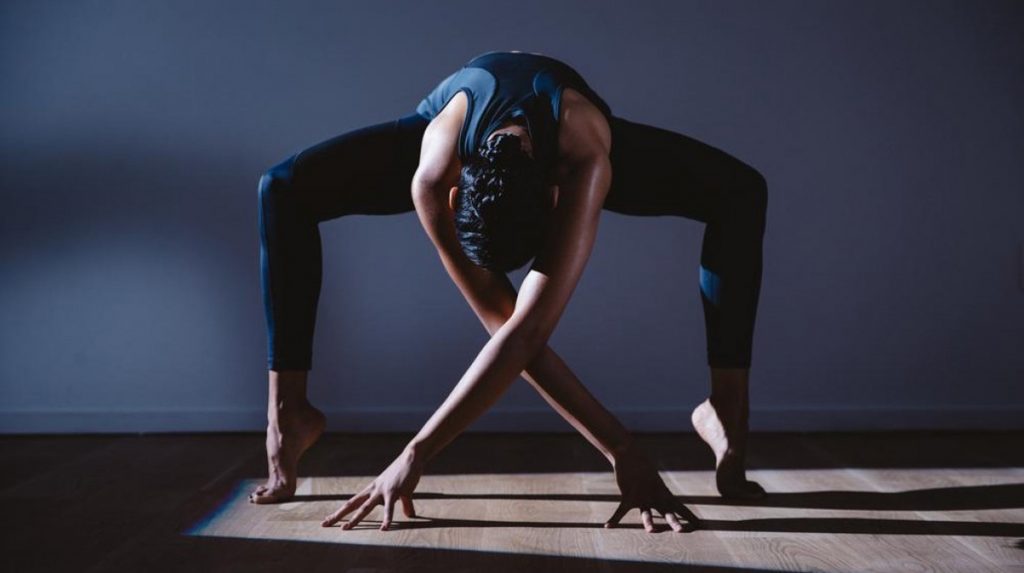Redefining Wearable Tech at Decoded Fashion NYC
Exploring new relationships with technology as it becomes part of the daily lexicon for identity and self-expression


The NYC Decoded Fashion summit proved to be an especially good-looking tech conference. Not to say that the average tech conference is unattractive, but this crowd obviously cares as much about aesthetics and presentation as they do about software functionality. Granted, as Decoded Fashion founder Liz Bacelar noted, “This is a fashion event about technology, not a tech event about fashion.” And, with a speaker roster including Rebecca Minkoff and Bre Pettis of Makerbot, it’s clear that the two worlds are swiftly colliding.
Historically, tech and fashion have been on opposite ends of the spectrum on the consumer level, but with the advent of smartphones, apps, fitness-trackers and 3D printing, technology has become as an integral part of everyday life as the shirt on your back. And much like that shirt, there is a level of emotional investment made when choosing what ends up on your body. Style is a universal form of self-expression that allows the individual to cultivate an identity that can be seen before a word is spoken. So the ultimate question at Decoded Fashion was: what is tech’s role in the conversation of self-expression? And consequently, how does that conversation shape the way tech is designed?

Billie Whitehouse, founder of We:eX, spoke of the necessity of looking at technology from the viewpoint of personal choice. “I think that we need the whole industry to not be called ‘wearable tech,'” Whitehouse said. “I think it needs to be called clothing.” Coming from a background in fashion, Whitehouse stressed the critical nature of aesthetic in her own design choices. “I really care about the softness of fabric and the drape of the garment. People don’t want to feel like a walking computer.” Putting theory into practice, We:eX has gotten as intimate as wearable tech can get by developing Fundawear, a line of undergarments that allow couples to stimulate each other from anywhere around the world by using an app. “We are complex humans, and we all want to have a sense of humor,” Whitehouse explained. “We want to make life entertaining.”

Fundawear is a considerably radical example of the direction wearable tech can take. It’s more likely that something along the lines of a Fitbit or Apple’s forthcoming smartwatch comes to mind when thinking about wearables. The problem with these gadgets however is that they are exactly that: gadgets. Matthew Woolsey, Executive VP of Digital at Barneys NY, echoed Whitehouse’s sentiment by stating, “No one is going to dress head-to-toe everyday in a technology suit.” Barneys is currently collaborating with Opening Ceremony and Intel to release the first-ever wearable designed by a luxury brand. Taking the form of a bracelet, Opening Ceremony’s MICA smartband encases an interactive touchscreen in an 18K gold setting detailed with snakeskin and pearl. Wearables can overcome their nerdy reputation “by making something that is beautiful and functional, not a cell phone on your wrist,” Woolsey stressed. “Even if you never turned it on, you would still covet it as a bracelet and say, ‘It’s something I can wear for the rest of my life.'”

Those present at Decoded Fashion definitely anticipate an emerging market for custom wearable accessories. As a prime example, the summit’s start-up competition was won by Cuff, a notification and tracking device that can be paired with a number of different jewelry pieces designed by the brand. However, some argued that people won’t be willing to stray from brands to which they are already committed. Kairos founder Sam Yang designed the T-Band with exactly this in mind. “If you have a Rolex, you’re not going to trade it out for a wearable,” said Yang. Instead of offering an entire smartwatch, the Kairos T-Band is a smartband that can be attached to analogue watches, effectively making any watch smart. “There’s been bias from Swiss watchmakers that smartwatches don’t stand the test of time,” Yang explained. “The problem with electronics is that they expire—what are you going to do with a $5,000 Apple watch after it expires in a couple years?”

The one thing that everyone agreed on, however, is that people want wearable tech to help them feel more connected with themselves and with others, whether by helping them express an identity or by facilitating interaction. Kapture Audio, for instance, is a wristband that can record the last 60 seconds of audio by tapping the device. “We wanted to make a way that people could share the amazing things that they hear,” said Kapture founder Mike Sarow. “Serendipitous audio is short form,” he explained. “Like what if your friend says something hilarious? Wouldn’t you want a way to save that so you could listen to it later?” Sarow even clinched an investor by expressing how precious some of these moments can be: “I asked the investor, ‘Hey, do you have any grandchildren?’ and it turned out he did, living in another state. So I said, ‘Wouldn’t it be cool if your son or daughter could record a special thing your grandkid said and send it to you?’ That convinced him to invest on the spot!”
While a niche group is already excited about wearables, it will be interesting to see if the industry will fulfill its potential and become a standard part of culture. Decoded Fashion truly demonstrated how this can happen by showing that that the future of wearables is not a cyborg dream of the technocrat, but one that is about the same beauty, communication and personal identity that we are all striving for everyday.
In addition to annual summits in New York, Milan and London, Decoded Fashion hosts meet-ups and hack-a-thons around the world.
Lead and second last images courtesy of Decoded Fashion and Steven Lau, all others by Gabriella Garcia










